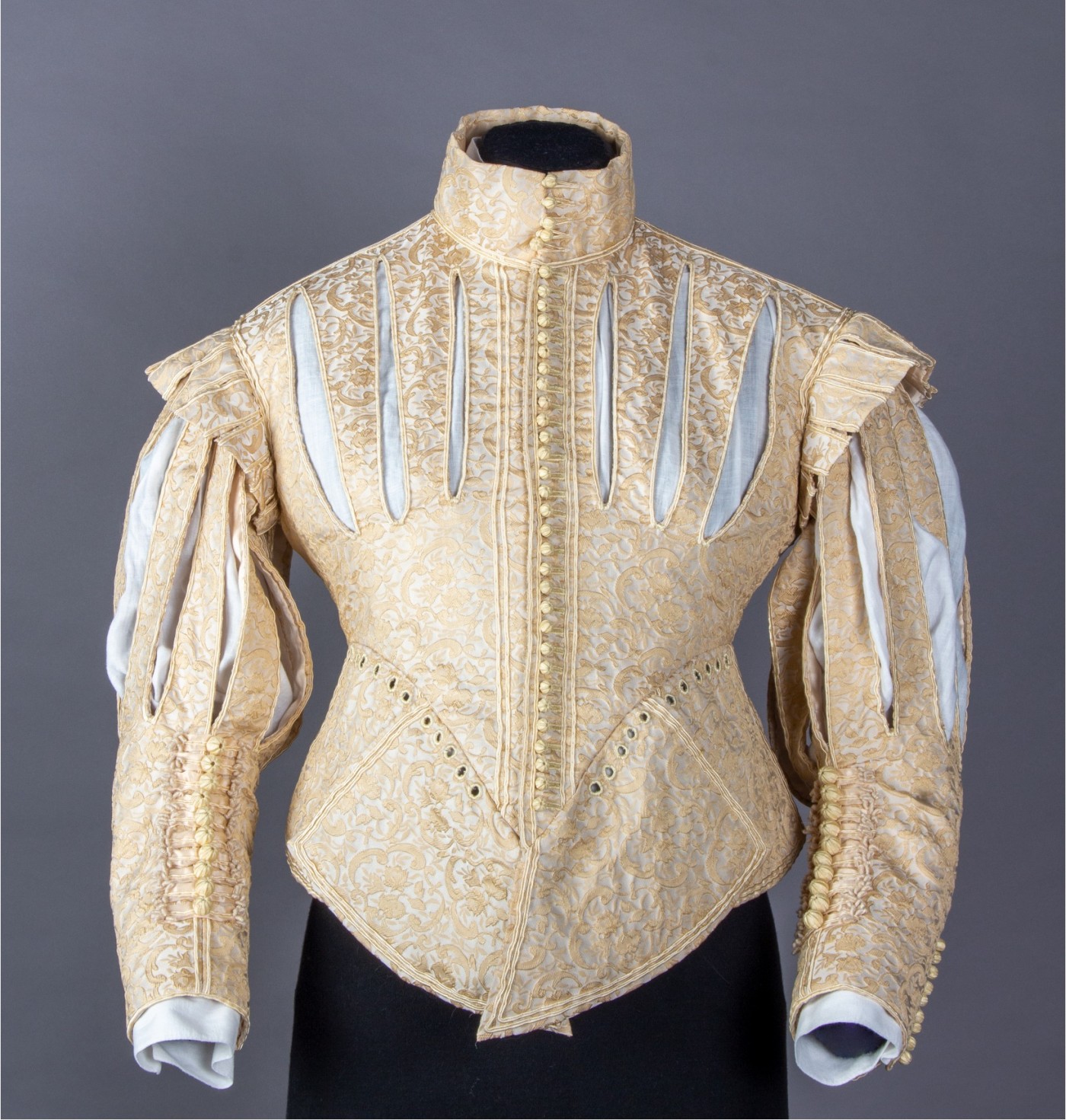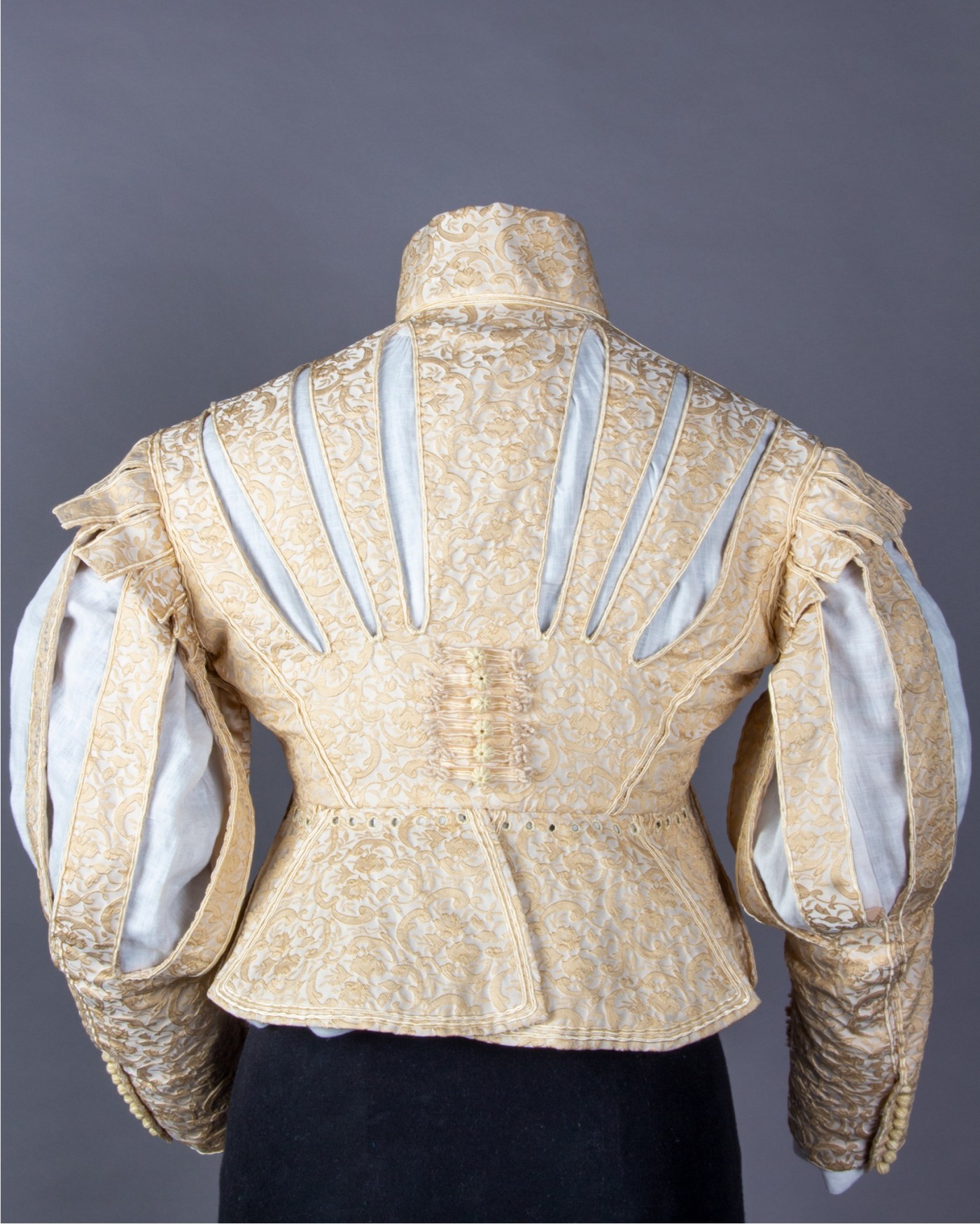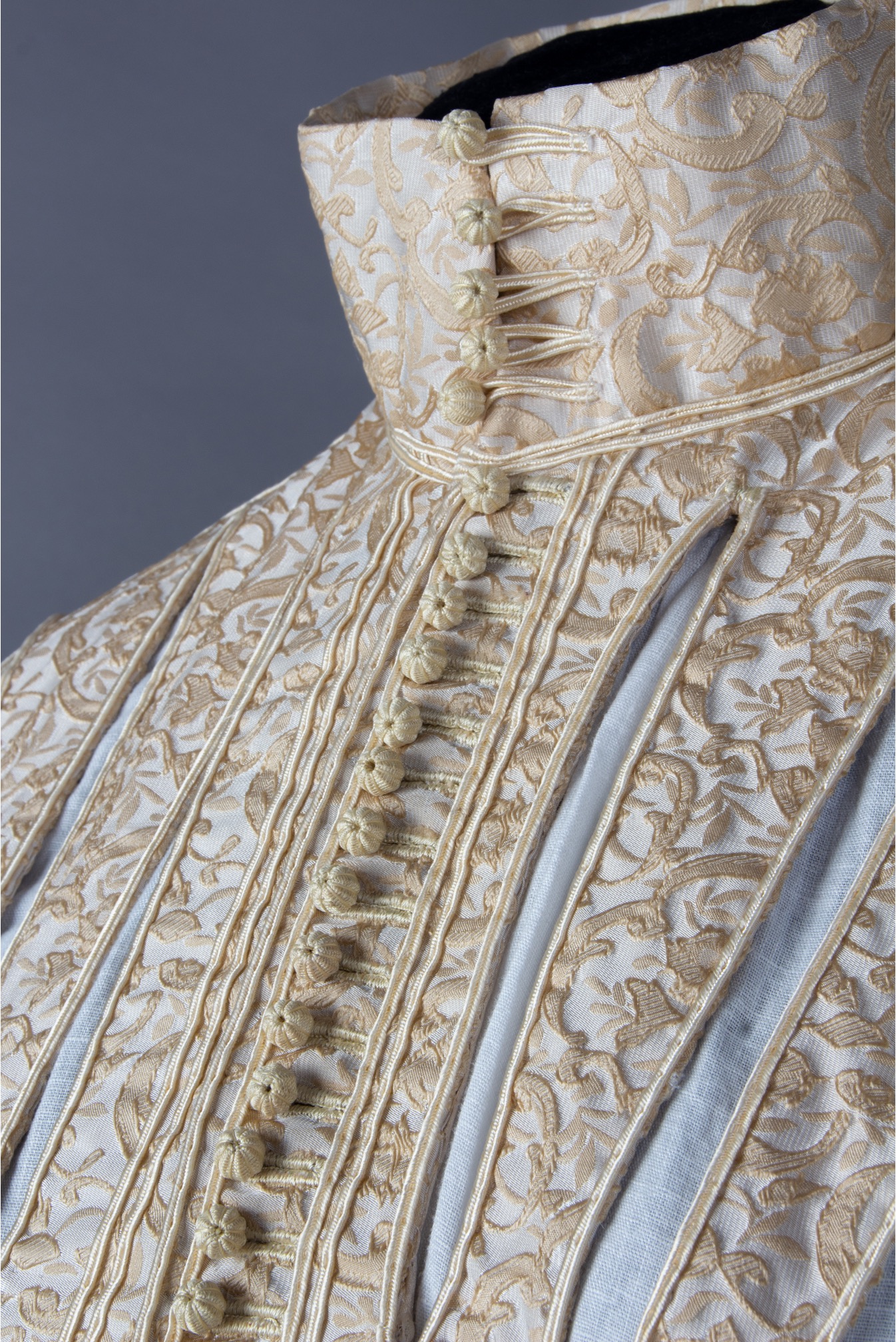- youtube
- bluesky
- Home
- About
- Costume Journal
- Membership
- Conference & Events
- Grants & Awards
- News & Social
In this week’s blog post, Patterns for Fashion Award winner Milly Whitefield describes her experience making the 1625-1630 men’s doublet she presented for the competition. From collections research to hand-making buttons, Milly recounts the joys and challenges of creating her award-winning piece.
I decided to take part in the Patterns of Fashion competition as part of my final year of studying Costume and Performance Design at Arts University Bournemouth. I have a keen passion for historical garments and tailoring, with a real interest in understanding what goes into their construction, so when the Patterns of Fashion competition brief was set as menswear, I knew it would be the perfect undertaking to develop my skills as a tailor. I pride myself on creating beautiful and detailed costumes and my love for what I do is reflected in the work that I produce, and I feel that the 1625 – 1630 Doublet I made for the competition shows this.
When deciding which pattern to make I knew I wanted to choose something that would challenge me, this is what lead to me choosing something from the 17th century as I knew I would have to sew it entirely by hand to keep it historically accurate. I therefore chose to reproduce the 1625 – 1630 Doublet that is part of the V&A’s collection. The 17th century was also a time where menswear was very flamboyant and exciting, it really intrigued me to see how the tailoring of a doublet couples with its more decorative elements. The slashed design and structured shape of the 1625 -1630 doublet is what really appealed to me the most.
There are only three photos of this doublet in the V&A archives, therefore I had to use a lot of other existing doublets with similar styles to support my construction choices. These I found mostly in digital museum archives with the Met and V&A having the most examples. Also due to the period I was working from, there were not very many pieces available to view and none that I was able to handle to really get an idea of the making methods. Luckily, the book ‘17th-century Men's Dress Patterns’ (Braun et al.) had loads of detailed images of all the elements of other similar doublets. This book was a key reference point for me during construction. The slashed style of doublet also only existed for around 5 years from 1620, which also limited my resources when researching.
One of the most difficult challenges I faced was the number of buttons, buttonholes, and eyelets. As all these elements not only were functional but also decorative it was crucial for them to be uniform and neat, so before committing to the actual costume I first did many samples so that I had the techniques well mastered. The hand covered buttons were probably my biggest undertaking as all together the doublet has 79. The Renaissance Tailor’s information about 16th and 17th century buttons was a helpful tool in supporting the creation of all these buttons. Thread wrapped buttons were common on garments from the 14th to the 18th century. They are made using a wooden bead that has threads woven over it. These were more common than metal cast buttons as not many people had access to casting equipment. In the 16th century, button makers guilds started appearing and were often associated with the lace makers guilds. It is thought that a student wanting to join the guild would have to make a dozen buttons to show off their skills. It was important to me to make all the buttons myself and I found this part of my research interesting as I felt I gained an appreciation for these students trying to join the guilds as I wove each button and understood the time and skill that goes into producing all the different types of buttons.
I loved the experience of entering the Patterns of Fashion competition as it pushed me further in both my research and making skills. I had never researched one specific garment in such detail before, looking at each individual element to understand the doublet as a whole. I look forward to taking this further to learn even more about the history of dress. The competition also was a great experience for me to meet other students who have inspired me with the amazing work they produced for both the Patterns of Fashion and Patterns for Performance competitions.
To learn more about the Costume Society’s awards, click here.
To read about the winning Patterns for Performance piece, read our previous blog post by award winner Caroline Husband.
Follow Milly on instagram at milly.whitefield.costume
Image gallery



